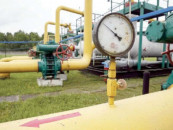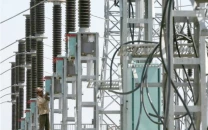Bank advances hit 3-year high
Rise comes on back of low cost investment schemes, lending targets

The growth in banks’ advances to the private sector hit a three year high of 19% and surpassed Rs10 trillion mark in the year ended December 31, 2021 after the central bank introduced low-cost investment schemes and assigned lending targets to banks for consumers of particular sectors such as housing and construction.
The advances had stood at around $8.5 trillion a year ago on December 31, 2020, according to the central bank’s data.
“Imposition of additional taxes of 2.5-5% by the government on banks whose advance to deposit ratio (ADR) remains below 50% encouraged the financial institutions to focus on increasing advances (credit to the private sector),” Arif Habib Limited (AHL) Economist Sana Tawfik said.
Through budget 2021-22, the government introduced additional tax of 5% on those banks whose ADR remained below 40%. On the other hand, a tax of 2.5% was slapped on banks whose ADR amounted to 40-50%.
“The average ADR of financial institutions stood at 48% in December 2021, up by 86 basis points (bps) year-on-year. It dropped 65bps in the month compared to the previous month of November 2021,” she said while speaking to The Express Tribune.
Besides, the central bank has directed commercial banks to allocate a minimum 5% (Rs330 billion) of their lending portfolios for housing and construction. Similarly, it introduced a low cost investment scheme called Temporary Economic Refinance Facility (TERF) in March 2020 to cope with Covid-19. Banks disbursed Rs436 billion under the initiative.
In addition to this, bank deposits grew 17% to record high of around $21 trillion during 2021 compared to Rs17.9 trillion in 2020 mainly due to a “significant surge in inflows of workers’ remittances sent home by overseas Pakistanis,” Tawfik said.
Increase in export earnings coupled with rupee devaluation of nearly 16% in 2021 also contributed towards increase the deposits.
“Going forward, the rise in capital reserves requirement (CRR) by 100 basis points to 4% on a daily basis and to 6% for a period of two weeks would encourage banks to offer schemes to attract further deposits from customers,” she said.
The government and the central bank’s focus on increasing lending to the private sector would encourage banks to make efforts to grow their deposits instead of making expensive borrowing to meet the lending targets.
Published in The Express Tribune, January 9th, 2022.
Like Business on Facebook, follow @TribuneBiz on Twitter to stay informed and join in the conversation.



















COMMENTS
Comments are moderated and generally will be posted if they are on-topic and not abusive.
For more information, please see our Comments FAQ